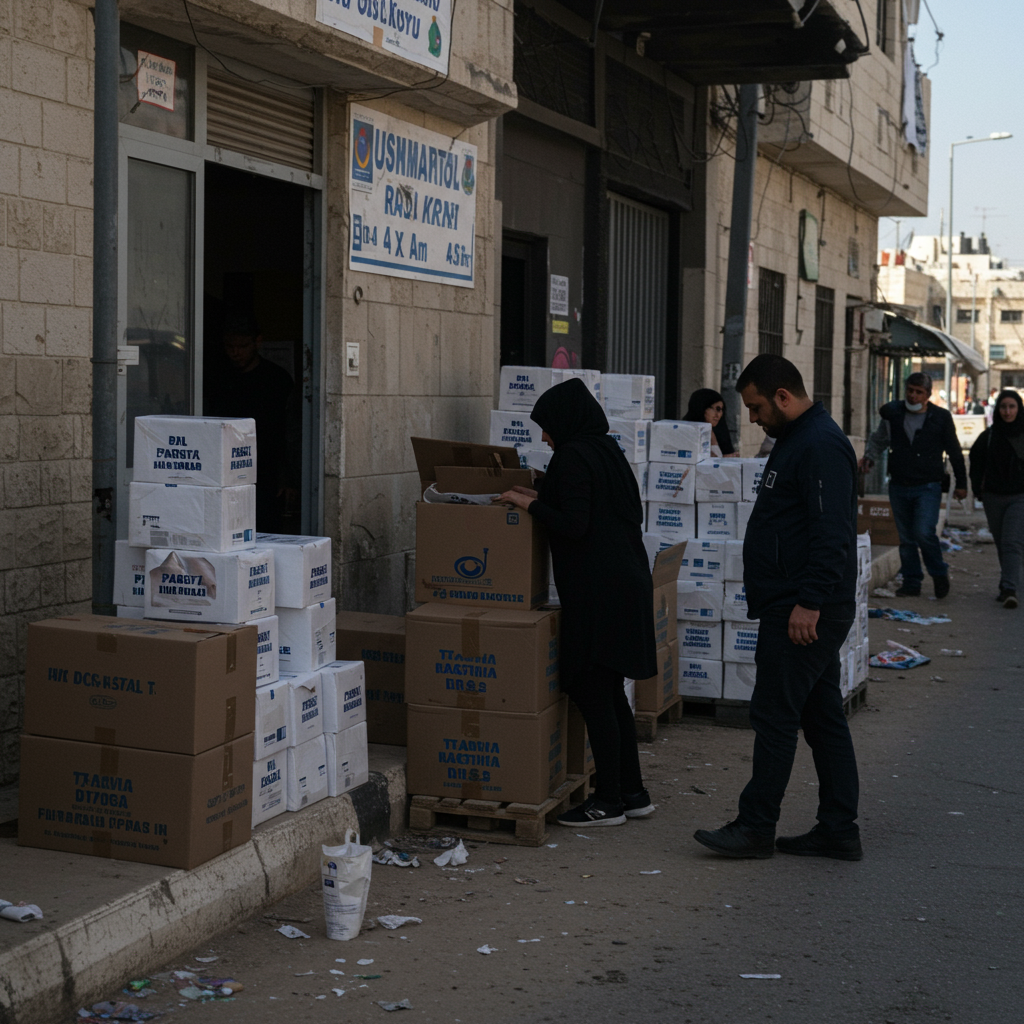Daily Toll Mounts in Gaza Amid Aid Crisis
At least 86 Palestinians were killed in Gaza on Tuesday, according to the Hamas-run Health Ministry. A significant portion of the fatalities – 56 people – occurred near humanitarian aid distribution points in the central and southern parts of the Strip. This latest surge in casualties adds to the devastating toll of the ongoing conflict, which has reportedly resulted in over 48,500 to 56,000 deaths and tens of thousands injured since October 7, 2023, according to various medical sources and reports, though figures vary and do not always distinguish between combatants and civilians.
The deaths near aid centers are the latest in a series of deadly incidents at locations where desperate civilians gather hoping to receive essential supplies. Reports indicate people approaching aid trucks have come under fire from tanks and drones, with witnesses describing events as “massacres.” Specific incidents contributing to the day’s death count were reported near aid distribution points in locations including Salah al-Din Street south of Wadi Gaza, Rafah, Gaza City (with casualties taken to al-Shifa Hospital), Nuseirat refugee camp (bodies arriving at al-Awda Hospital), and Khan Younis (near Nasser Medical Complex).
Controversy Surrounds Aid Delivery
These deadly occurrences near aid sites highlight the perilous conditions faced by Gazans attempting to access humanitarian assistance. Some of the incidents have taken place near distribution points associated with the Israeli and United States-backed Gaza Humanitarian Foundation (GHF). This initiative has drawn significant criticism from international bodies and human rights organizations.
The head of the United Nations Relief and Works Agency for Palestine Refugees (UNRWA) reportedly labeled the GHF a “death trap” that “humiliates and degrades desperate people” and costs more lives than it saves. The UN has reportedly refused to cooperate with the GHF, raising concerns that it prioritizes Israeli military objectives and effectively “weaponises” aid. Since the GHF’s aid rollout began, reports indicate over 400 people have been killed and 1,000 wounded near these sites. Human rights NGOs, including the International Commission of Jurists, have condemned “private militarized humanitarian aid operations in Gaza,” warning that those involved could face prosecution for complicity in potential war crimes, such as the forcible transfer or starvation of civilians.
The Israeli military has stated it is reviewing reports of casualties resulting from fire by its troops near aid sites. They claim that previous shootings near GHF sites were provoked by “suspects” approaching soldiers in militarized areas, such as near the Netzarim Corridor.
Deepening Humanitarian Crisis
The daily casualties near aid points underscore the severity of the humanitarian crisis gripping Gaza. The closure of critical crossings, particularly Rafah and Kerem Shalom following Israeli ground operations in Rafah, has drastically cut off the flow of aid, bringing it to a near halt and raising UN warnings of potential famine. While some aid enters via northern crossings, it is deemed insufficient, and delivery to displaced populations in the south is hampered by ongoing combat.
The conflict has resulted in widespread destruction, with estimates suggesting over 60% of Gaza’s infrastructure is damaged or destroyed and over 90% of the 2.3 million population displaced. Over 1.8 million people are estimated to be sheltering in the south, leading to severe overcrowding in makeshift camps and UNRWA facilities, with critical shortages of food, fuel, clean water, and medicine. Lack of sanitation and fuel for waste collection are exacerbating health risks, leading to outbreaks of disease.
Conflicting Accounts and Broader Context
The conflict continues amidst conflicting narratives regarding actions on the ground. A recent UN Human Rights Council report accused Israel of committing “genocidal acts” and employing sexual violence tactics, allegations vehemently rejected by Israel. Israeli officials, including the Prime Minister, have dismissed the UNHRC report as antisemitic and biased, countering that the UN ignores crimes committed by Hamas, which they describe as the worst massacre against Jewish people since the Holocaust. The IDF denies sexual violence allegations, stating clear policies prohibit such misconduct. Israel’s Foreign Ministry called the report a “conspiracy theory” and “blood libel.”
The conflict originated with the Hamas attack on Israel on October 7, 2023, which resulted in approximately 1,200 Israeli deaths and the taking of hundreds of hostages. Israel’s subsequent military operations aim to dismantle Hamas infrastructure, including tunnels often described as embedded within civilian areas, a claim Hamas denies. Incidents like the Israeli military’s entry into Gaza City’s Al Shifa hospital, which Israel claimed sat atop a Hamas command center, sparked international alarm amidst conflicting accounts from both sides.
UN officials have described the high number of deaths at aid sites as reflective of the “horrors of what is going on in Gaza,” stating that people are being killed simply for trying to get food due to a “militarized humanitarian distribution system” that is failing. The international community continues to call for efforts to find the political will to halt the violence and address the spiraling crisis.




